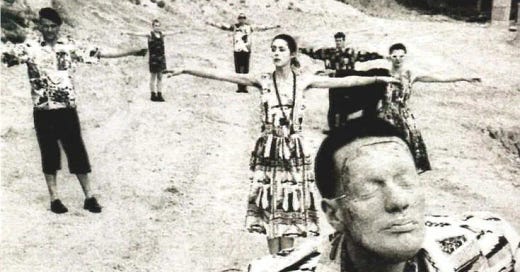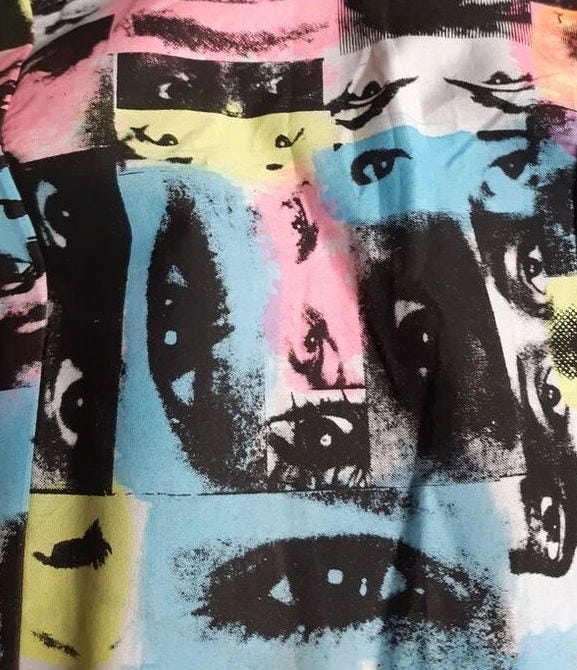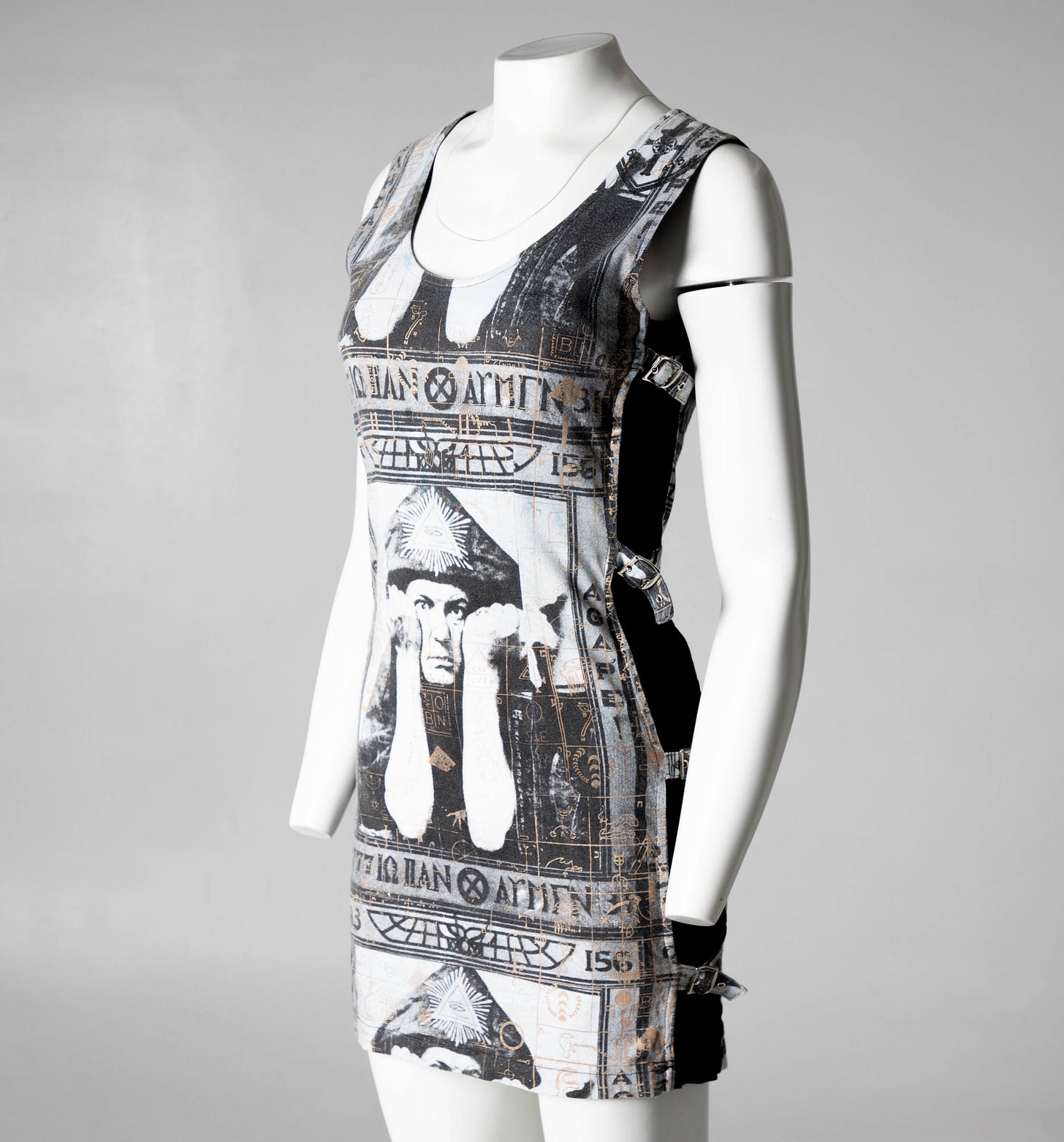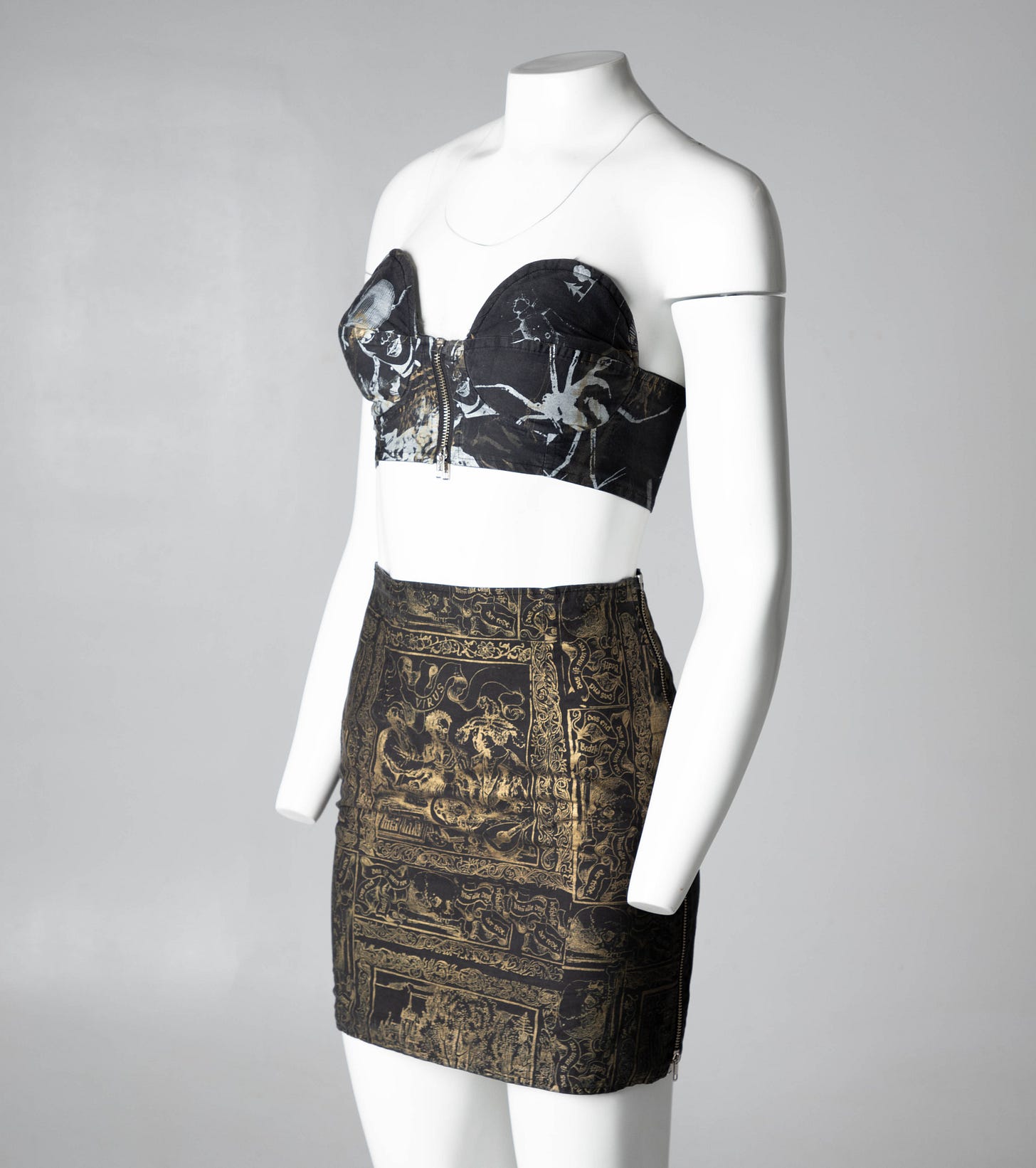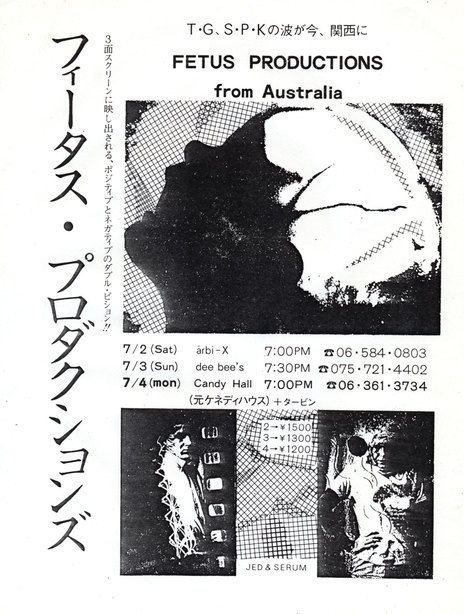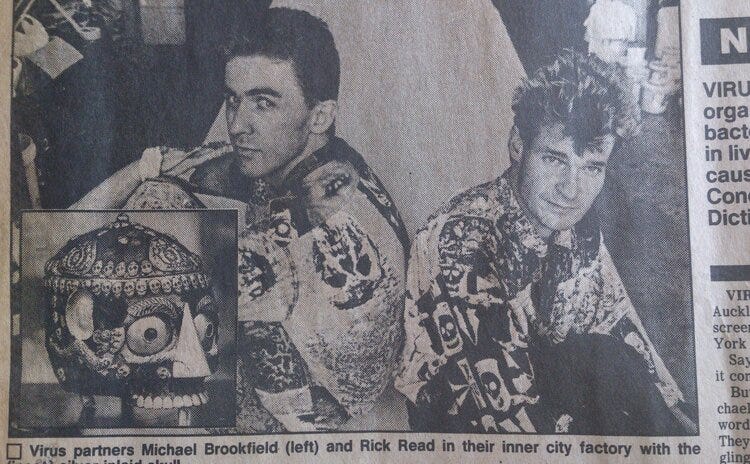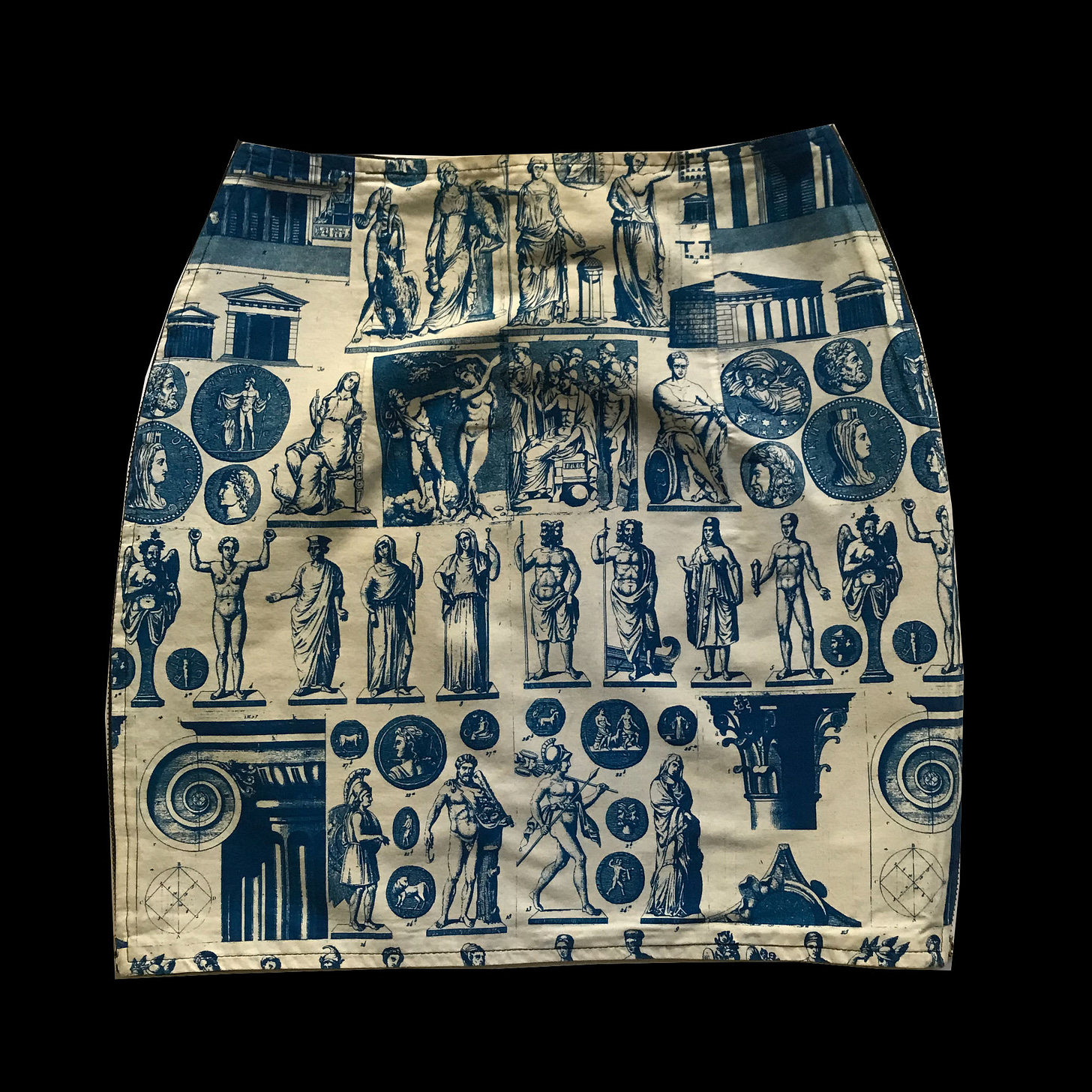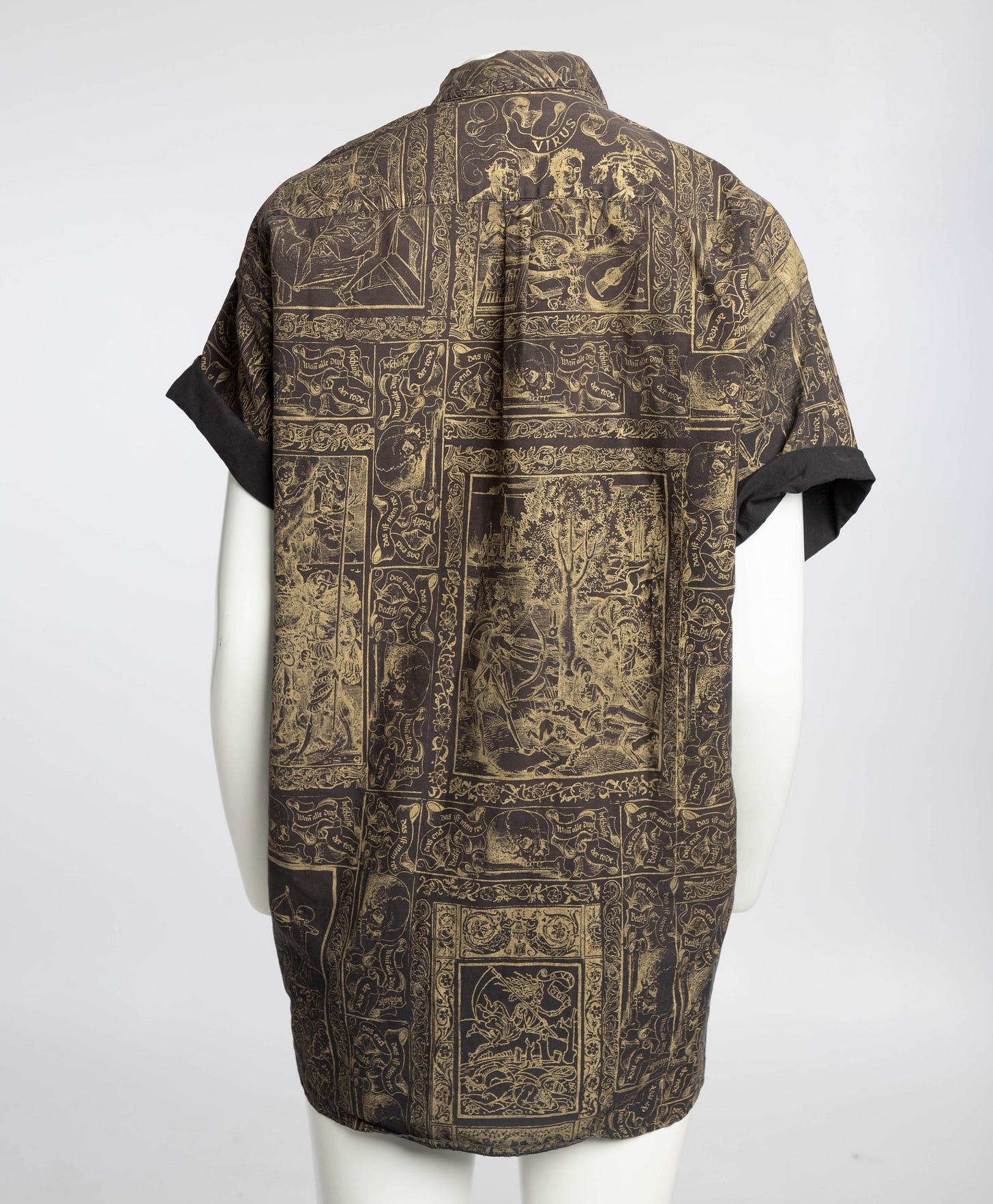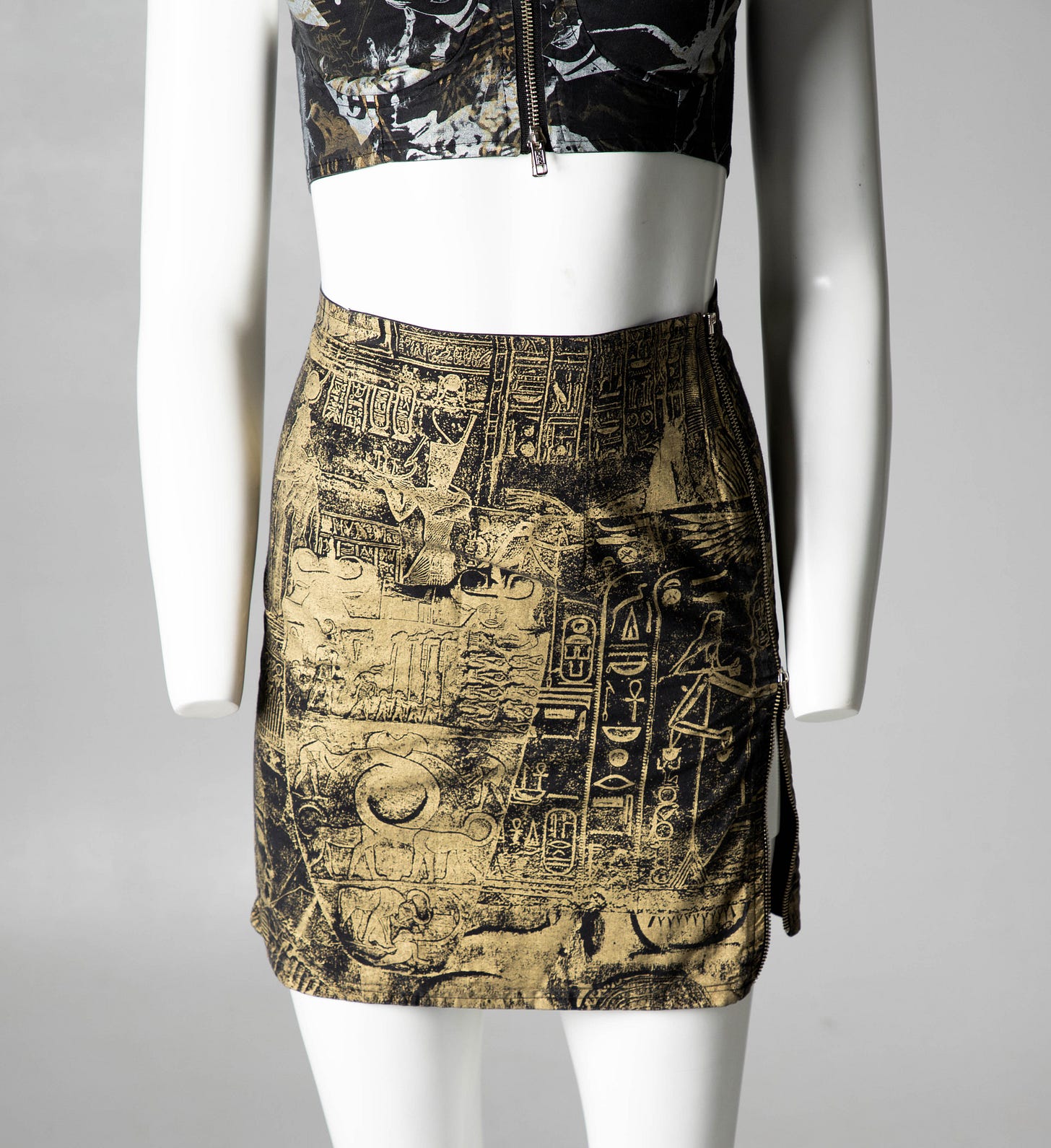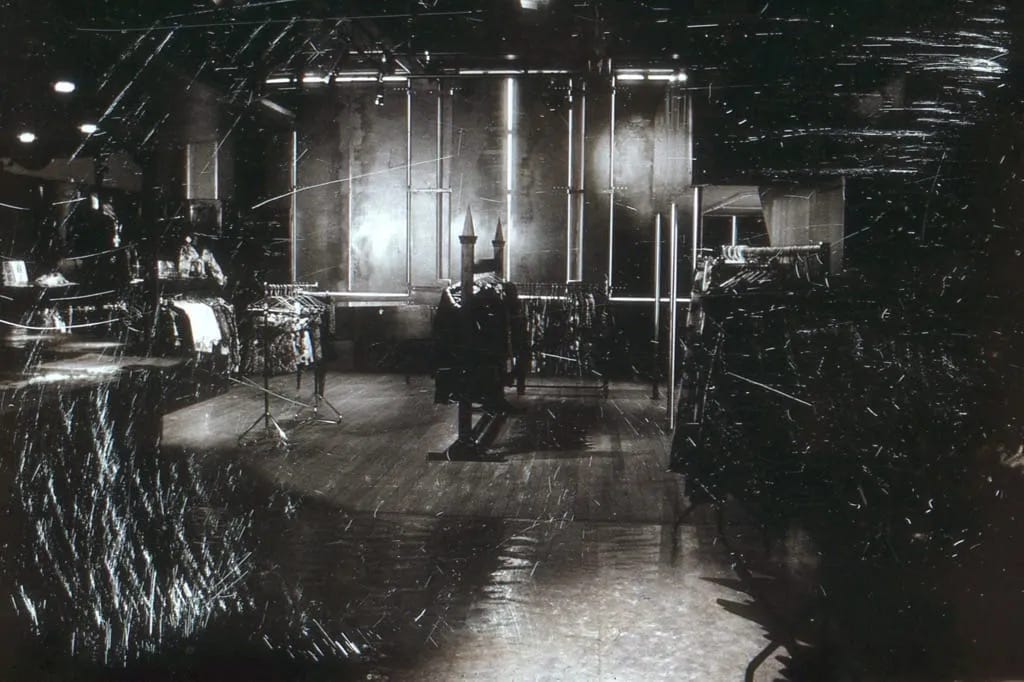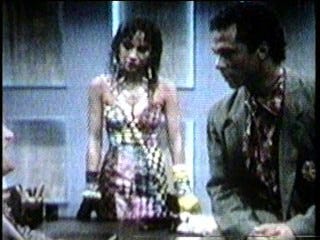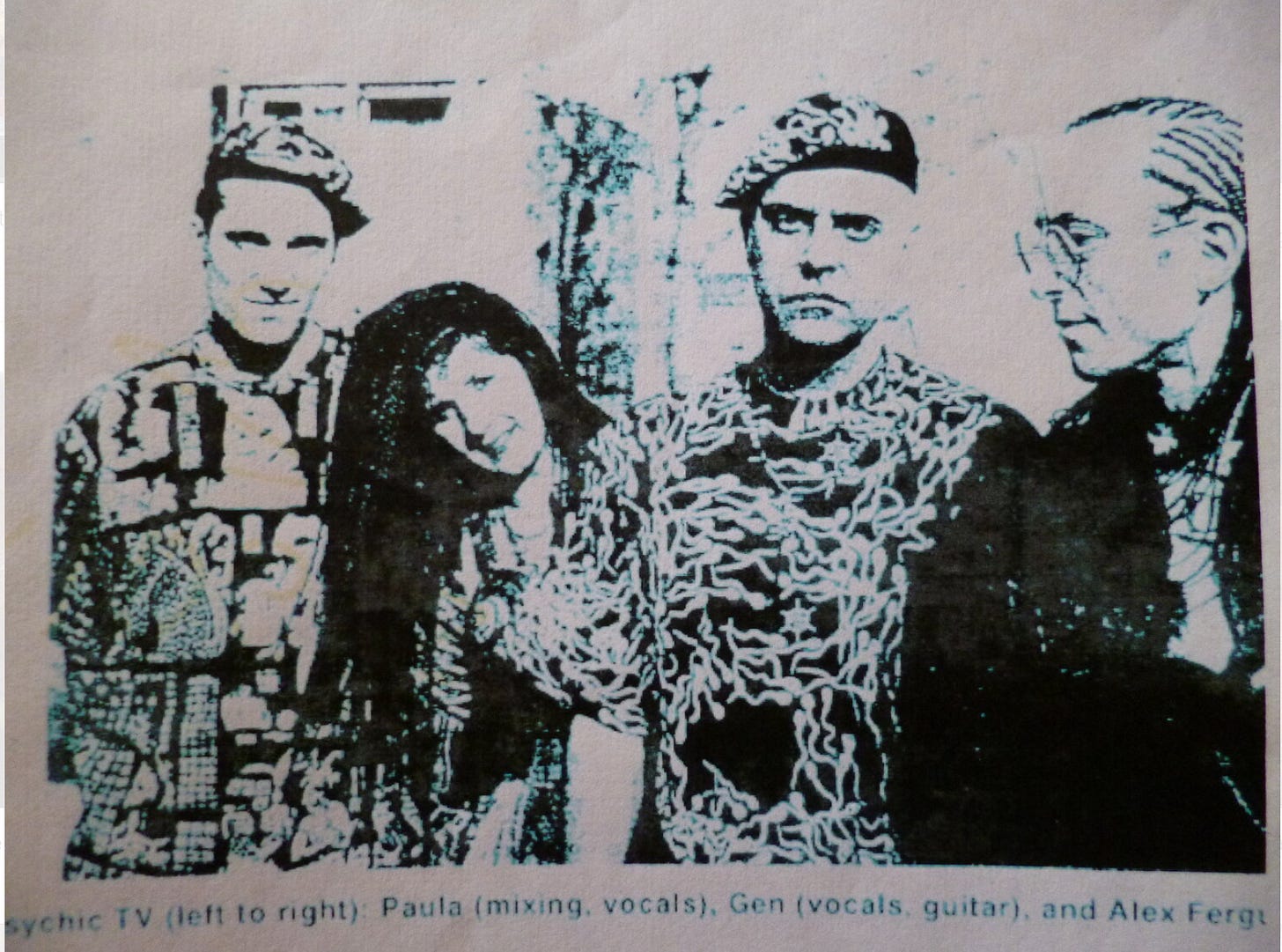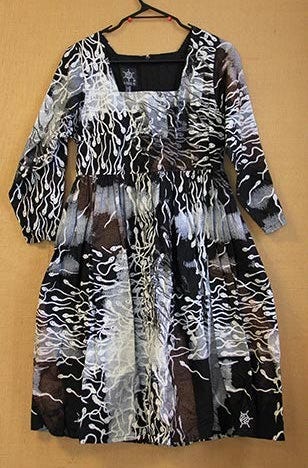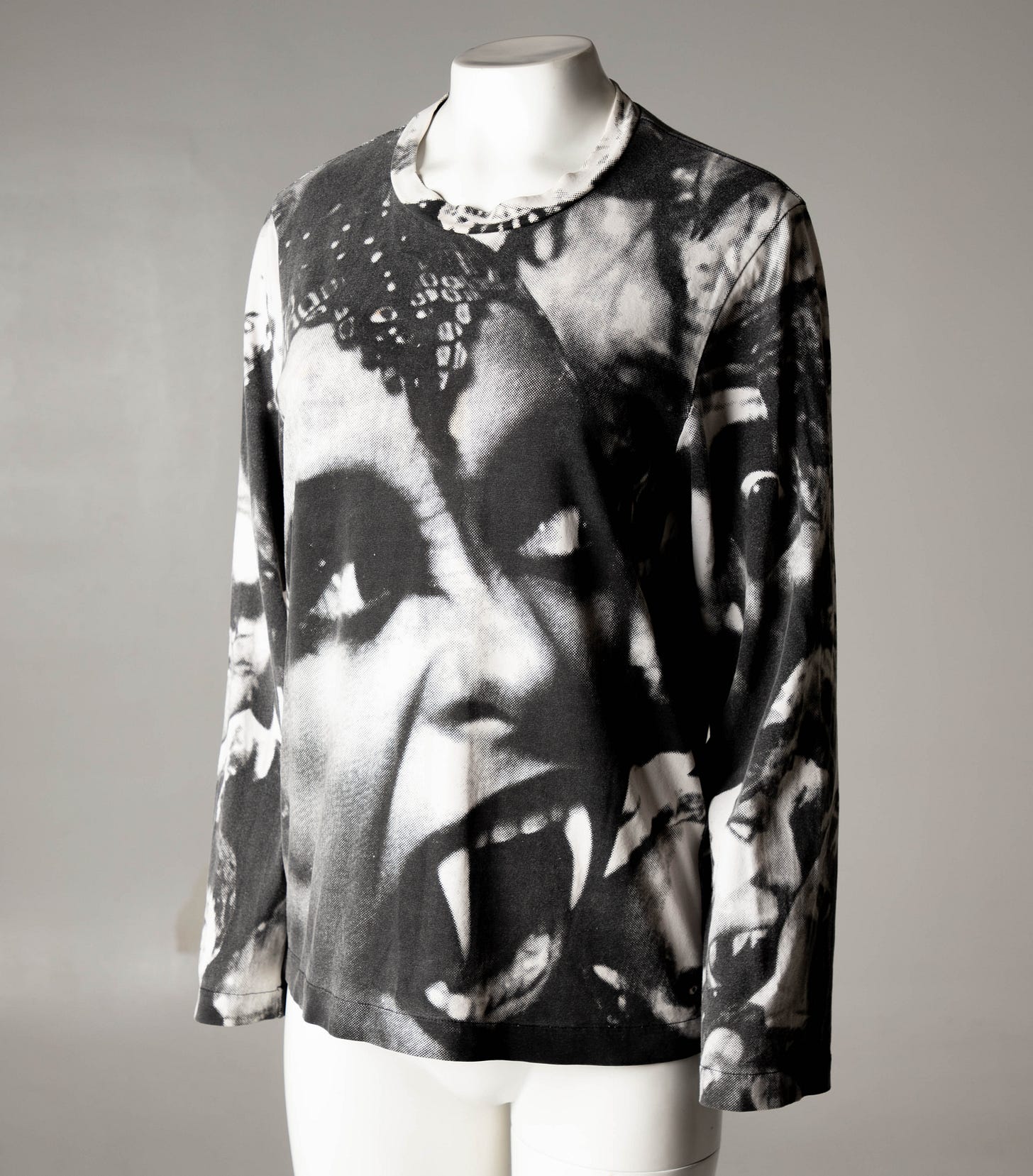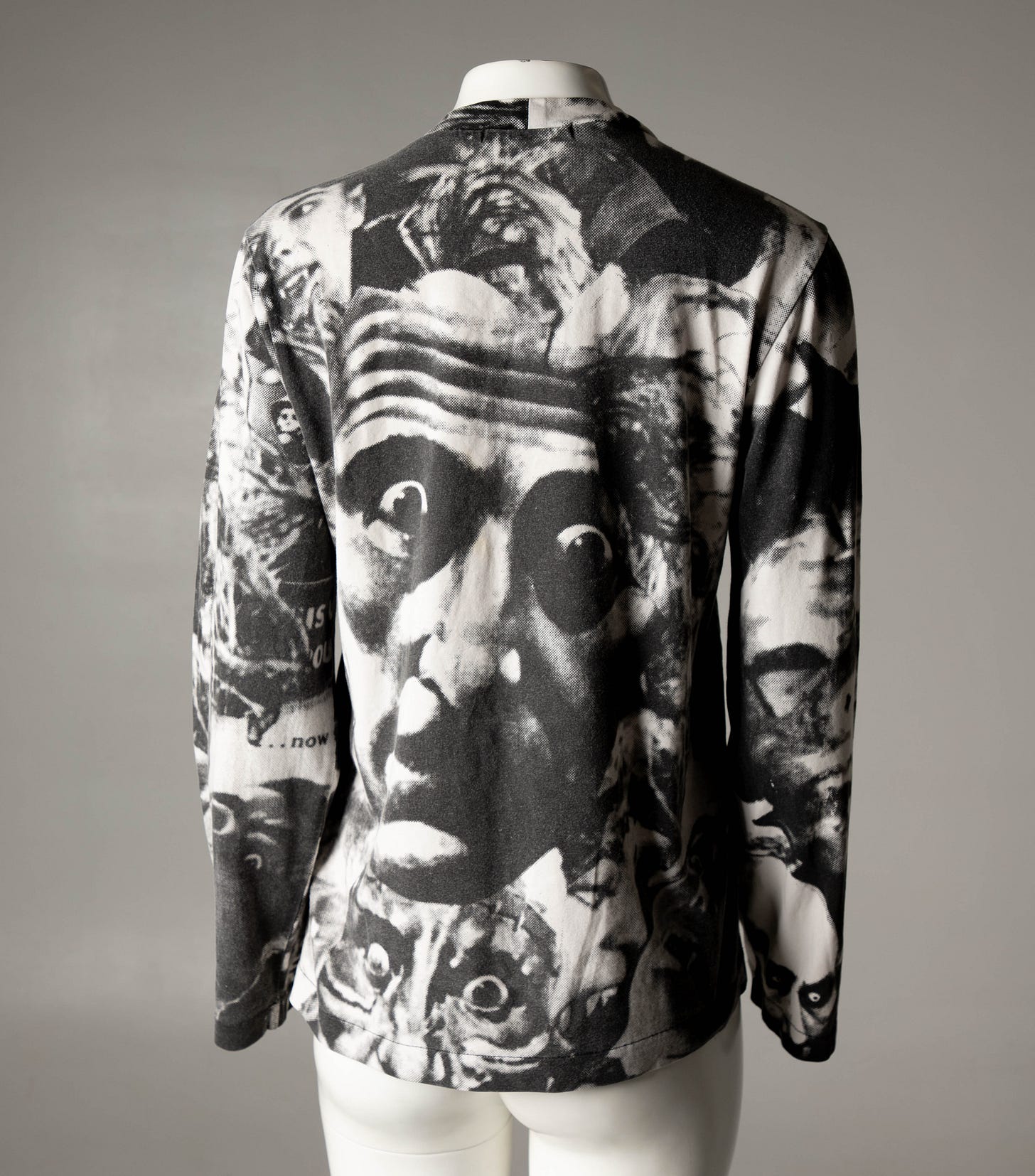I was a teenager when I first encountered Virus clothing’s surrealist and esoteric screenprinted designs behind the counter of the ironically titled ‘Remains to be Seen’, a vintage store in Hamilton, NZ. Their collection of ‘eye’ print Virus garments were prominently displayed, as a further play on the pun by which the store was named, and were disappointingly marked with a crudely written notice ‘NOT FOR SALE’. The prints were unlike anything I had ever seen and I remember being completely entranced by them.
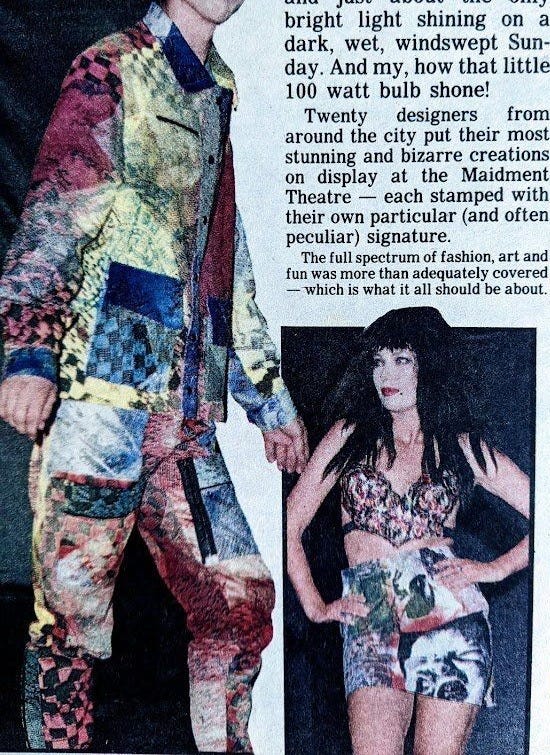
Moving to Auckland later on, I became really interested in 80s industrial music, a genre in which New Zealand and Australia had their own interesting contributions. It was through this that I started my own collection of Virus’s vintage pieces – Virus having close aesthetic ties to this scene. Virus’s hand screenprints ranged from designs lifted from William Blake and Albrecht Dürer, medieval woodcuts, surrealist-inspired portraits, insects and even the craters of the moon. Through my hunt for special Virus pieces (mainly via Trademe, NZ’s answer to Ebay) I eventually found my way to Virus’s archive, now stored in a suburban basement, and was able purchase some of their dead stock pieces from the 80s and early 90s.
For my birthday around this period my friends got in contact with the, defunct by then, Virus and asked them to make a replica of the Aleister Crowley print dress that they had made in the 80s, which was displayed in the Auckland Museum. They luckily still had the old screens and made me an exact replica, an extremely special present. It was by chance I wore this Virus Crowley print dress to a house party where Rick Read, one of the designers of Virus, happened to be staying and we briefly acknowledged the coincidence. I was sad to hear he passed away not long after. Moving away from NZ a few years later led to the end of any new Virus pieces to my collection but it still remains very special to me.
Virus is an important, but often overlooked, part of New Zealand’s fashion history and an offshoot of an equally culturally important avant-garde music, art and audio visual collective, Fetus Productions. The story of Virus and Fetus Productions I will share below.
Fetus Productions was an experimental music group which incorporated multimedia elements into their shows, creating art shows and (eventually) computer based presentations that encompassed both visual and sound elements from 1980 to 1989. They had an ever-changing cast but the original members were Jed Town, Sarah Fort and Mike Brookfield, who went on to create Virus. When a journalist interviewed Jed Town in the mid-1980s, Town sported scarily modified “fangs,” while a jar containing what appeared to be a real fetus sat benignly nearby.
“I was inspired by images found at various medical libraries of genetic mutations found in humans and animals and began to Photostat the images and cut them into collages,” Town has said. “I showed them a friend, Mike Brookfield, and he was inspired to create many works with fluorescent colours on canvases.” - Jed Town
After an initial exhibition in Auckland, the trio relocated to Sydney where they created a series of audiovisual works. Production of the first Fetus’s album, YPRX1908, followed, assisted by former members of SPK, The Features and Dead Can Dance. Mike Brookfield’s screenprints of the time included images of disaster and genetic deformity and it was around this time that Mike alongside Steve Nixon started to print fabric and produce their own garments, selling them at Melbourne’s Paddington Markets to the early Dotti and Impact Imprint stores.
After a couple of years, Fetus Productions left Australia with members heading to Japan, England, and back to New Zealand. Mike Brookfield alongside Rick Read and other friends ended up in London where they lived in a squat and were to some degree involved with the industrial culture of the time including Throbbing Gristle offshoots such as Psychic TV, and Chris and Cosey, as well as other groups like Current 93 and Portion Control.
During the late 70s and early 80s, hand screenprint textiles were having their moment in London with designers such as Modzart, BodyMap, Sue Clowes and Pam Hogg all using textiles with hand screenprinted designs. Mike, Rick and a few friends built a print studio in their squat and began producing their own unique screenprinted designs to sell at Camden Market, the Great Gear Market in Kensington and to the odd store in France, Italy, Holland and Germany. During this period, Fetus Productions produced further musical work such as the album Enviromental and Flicker on 12” single.
It was after returning to New Zealand in 1986 that Mike and Rick established the Virus clothing label. The printing studio was located on Cross Street, Auckland, with the label sold from a nearby upstairs shop that fronted onto Karangahape Road. The shop was called “Beast” and was established by Mike's sister, Alice Brookfield, alongside the textile designer Adrienne Foote, responsible for Footeprints and later the distinctive neoclassical and nature-inspired prints for the label DNA.
The business quickly expanded from its central Auckland base on Karangahape Road, to include the shop Ameba on Haight Street in San Francisco (leading to Virus pieces featuring in cyber culture mag, Mondo 2000) and a showroom in New York hosted by designer Patricia Fields (later stylist for Sex In The City). They received orders for stores such as Bloomingdales and Seibu Seed in Tokyo where they were showcased alongside Jean Paul Gaultier and Katherine Hamnett. Through these channels, Virus pieces have been picked up and worn by Madonna, Michael Hutchence, Genesis P-Orridge, and seen on TV shows such as Miami Vice. Virus garments were even for sale for a time in virtual reality via Second life.
The sperm print was one of the label's earliest and most recognisable designs. Steve Nixon, who collaborated with Brookfield as part of the Fetus Productions collective, designed the first incarnation of the sperm print in 1984. Often, Jed Town wore a sperm print shirt during Fetus Production performances. Recently, a sperm print extremely reminiscent of Virus’ was seen in British designer Ashley Williams 2019 collection, with Virus’s unusual textile designs capturing the imagination to this day.
References and Further Reading
https://www.aucklandmuseum.com/discover/collections/person/5472
https://www.nzfashionmuseum.org.nz/search/?s=virus&p=3
https://www.witchdoctor.co.nz/2013/fetus-productions/
https://www.discogs.com/artist/180917-Fetus-Productions

